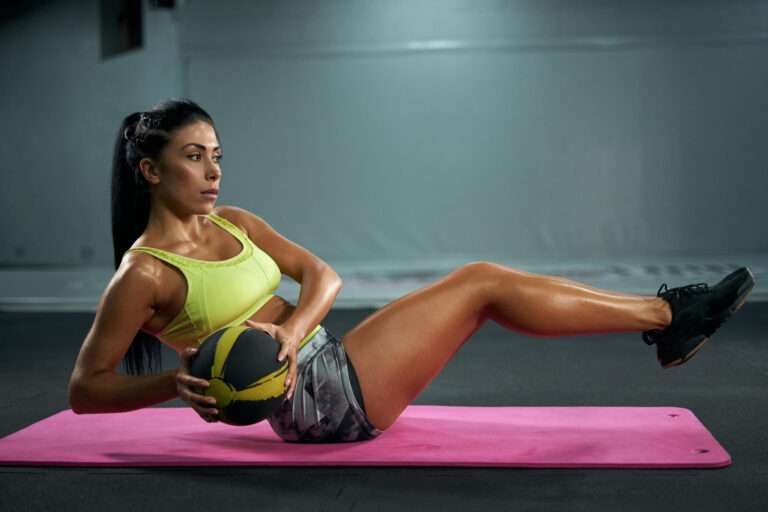How to fix uneven lats? Best Tips and Exercises

Many people who enjoy staying fit want to have a body that looks and feels just right. But there’s one important part of this journey that doesn’t always get enough attention: making sure your back muscles, especially the ones called “lats,” are the same on both sides. It’s crucial to understand why uneven lats can be a problem and why it’s essential to have them balanced if you want a body that’s both well-proportioned and strong.
Understanding the Challenge
Uneven lats, which means that one side of your upper body is different from the other in terms of size, strength, or how it’s developed, can be a problem for many people who do weight training. This imbalance doesn’t just affect how you look, but it can also cause issues with your posture and even make you more likely to get injured. Whether you really like lifting weights, are into bodybuilding, or just want to be healthier, it’s important to work on fixing not only your uneven lats but also other imbalanced muscles as part of your fitness journey.
Importance of Balanced Lats
Having lat muscles symmetry not only make you look better with that desired V-shaped back, but they’re also essential for your strength and stability. When your latissimus dorsi muscles are equally developed, it helps you maintain good posture, keeps your shoulders healthy, and makes your upper body stronger. Plus, it can stop muscle imbalances that might cause pain or discomfort when you’re active or going about your daily life.
Identifying the Imbalance
To start fixing uneven lats, the first and most important step is figuring out the imbalance that already exists. This process means carefully checking your latissimus dorsi muscles, often called the “lats.” This helps you find out how uneven they are and create a specific plan to fix them.
Checking your lats should start with looking at them in a mirror with good lighting. Pay attention to your back muscles and see if one side looks bigger, more defined, or more developed than the other.
You can also take pictures from different angles to have a record of where you’re starting. This record will be helpful as you work on fixing the imbalance. Keep in mind that most people have some natural differences between their sides, so a small difference might not need correction.
Once you’ve found the side with less strong or less developed back muscles, it’s important to think of it as your “less strong side.” This thought is important for your mind because it helps you concentrate on fixing the unevenness.
Keep in mind that weaker side doesn’t mean it’s less valuable; it just shows the side that requires more attention and focused exercises. By realizing this less strong side, you’re starting the journey towards having a balanced and evenly developed body. Your dedication to fixing this imbalance will result in better looks, posture, and overall strength.
Isolation Exercises for Targeting the Weaker Side
When you have lats that are not even, it’s important to work on the weaker side to make your latissimus dorsi muscles balanced. You can use special exercises that work only one side at a time. Here, we’ll look at two exercises: Single-Arm Dumbbell Rows and Single-Arm Lat Pull-Downs. These exercises focus on the weaker side of your lats, making it as strong as the other side.
Single-Arm Dumbbell Rows
Single-Arm Dumbbell Rows are an excellent exercise for isolating and strengthening each lat individually. They not only help correct imbalances but also enhance your mind-muscle connection. Here’s a detailed guide on how to perform this exercise:
- Setup: Stand with your feet shoulder-width apart, holding a dumbbell in one hand. Place your opposite hand on a bench or a sturdy surface for support.
- Positioning: Bend your knees slightly and hinge at your hips to maintain a straight back. Your back should be parallel to the ground, and the arm with the dumbbell should hang straight down.
- Execution: Begin by pulling the dumbbell towards your hip while keeping your elbow close to your body. Squeeze your lat as you lift the weight. Hold the contraction briefly at the top of the movement.
- Lowering: Slowly lower the dumbbell back to the starting position, maintaining control throughout the descent.
- Repetition: Perform the desired number of reps on one side, then switch to the other to maintain balance.
Key Tips:
- Keep your back straight and core engaged to prevent any unnecessary strain on your lower back.
- Choose an appropriate weight that allows you to perform the exercise with proper form.
- Maintain a controlled and deliberate motion to maximize the effectiveness of the exercise.
Single-Arm Lat Pull-Downs
Single-Arm Lat Pull-Downs are another isolation exercise that effectively targets and strengthens the weaker lat. This exercise provides a unique advantage as it simulates the movement of a two-arm lat pull-down while concentrating on one side at a time. Here’s how to perform it:
- Setup: Attach a single-hand attachment to the lat pull-down machine. Sit down and secure your legs under the pads. Adjust the weight.
- Grip: Grasp the handle with one hand, and position the other hand on your hip or thigh for stability.
- Execution: Start with your arm fully extended and pull the handle down towards your hip while focusing on engaging your lat. Hold the contraction for a moment at the bottom of the movement.
- Release: Slowly release the handle and return it to the starting position.
- Repetition: Complete the desired number of reps on one side, then switch to the other side.
Key Tips:
- Ensure that your upper body remains stationary throughout the exercise.
- Choose a weight that allows you to perform the exercise with proper form and control.
Compound Exercises to Fix Uneven Lats
To make your lats more even, you can use compound exercises. These exercises work both sides of your back at the same time and can help balance your lat muscles. Here are some compound exercises that can help fix lats asymmetry:
Pull-Ups:
- Pull-ups are an excellent compound exercise for targeting the lats and building overall upper body strength.
- To correcting uneven lats, focus on proper form and perform an equal number of reps on both sides.
Lat Pull-Downs:
- Lat pull-downs using a cable machine allow you to adjust the weight and perform a controlled, balanced workout.
- Ensure that you’re pulling the bar down evenly on both sides to work both lats equally.
Bent-Over Rows:
- Bent-over rows work not only the lats but also the middle and upper back muscles.
- When performing this exercise, concentrate on maintaining symmetry and balance in your movements.
T-Bar Rows:
- T-bar rows engage the lats and provide an opportunity to address imbalances by focusing on form and equal effort on each side.
Deadlifts:
- Deadlifts are a compound exercise that works the entire back, including the lats.
- Pay attention to your form and ensure you’re lifting with equal strength from both sides.
Barbell Rows:
- Barbell rows are effective for targeting the lats and the upper back.
- Emphasize proper posture and control to achieve balanced muscle engagement.
Dumbbell Rows:
- Single-arm dumbbell rows allow you to isolate each lat and work on imbalances.
- Ensure that you’re lifting equally with both arms and maintain good form.
Chin-Ups:
- Chin-ups focus on the biceps and lats and can be beneficial in achieving balanced lat development.
- Concentrate on maintaining balance while performing chin-ups.
Unilateral training for Weaker Side
Unilateral training means you work on one side of your body separately from the other side. This helps you give special attention to the weaker part of your latissimus dorsi, the muscles in your back. In this part, we’ll talk about why unilateral training is important and ways to make your lat muscles more even by focusing on the weaker side.
Why Unilateral Training Matters:
- Isolate the Weaker Side: Unilateral training allows you to target and strengthen the weaker lat specifically. This focused effort is essential for addressing imbalances.
- Enhance Mind-Muscle Connection: Unilateral exercises can improve your awareness and connection to the targeted muscle, promoting better engagement and control.
- Prevent Compensatory Patterns: When both sides of your body are engaged in bilateral exercises, the stronger side may compensate for the weaker side. Unilateral training eliminates this compensation.
Strategies for Unilateral Training:
- Single-Arm Exercises: Incorporate exercises that require one arm to work independently, such as single-arm dumbbell rows, single-arm lat pull-downs, and single-arm cable rows. Focus on maintaining proper form and balance between the two sides.
- Imbalance Assessment: Regularly assess the strength and size of each lat to monitor progress. This assessment can help you tailor your workout to address specific weaknesses.
- Progressive Overload: Gradually increase the resistance or intensity of your unilateral exercises as you progress. This approach encourages muscle growth on the weaker side.
- Mindful Repetitions: Pay attention to the mind-muscle connection during each repetition. Concentrate on feeling the contraction in the weaker lat to ensure it’s actively engaged.
- Balanced Workout Routine: Maintain a balanced approach by including both compound and isolation exercises, as well as unilateral training, in your workout routine. This comprehensive approach covers all aspects of lat development.
- Consistency: Consistency is key to achieving balance. Incorporate unilateral training into your routine regularly to work on the weaker side.
- Patience: Addressing imbalances takes time. Be patient and persistent, and don’t be discouraged by slow progress.
Mind-Muscle Connection to Fix Uneven Lats
The mind-muscle connection is an important idea in fitness and strength training. It plays a big role in making your back muscles (latissimus dorsi) even. This connection means trying hard to make your back muscles work during exercise. Training your brain and your back muscles to work together is necessary to fix uneven back muscles. When you pay attention to feeling the muscles working, you make sure the weaker side is working in every exercise. This awareness and control help you make each exercise count because you focus on the muscles you want to make stronger. The mind-muscle connection doesn’t just make your muscles even, it also stops the strong side from doing all the work, making your body look more balanced and in harmony.
Stretching and Mobility Exercises to Fix Imbalanced Lats
When you’re trying to make your lats more balanced, it’s important to add stretching and mobility exercises to your regular routine. These exercises help your muscles get more flexible, increase how far your shoulders can move, and ease muscle tightness. Stretching after workout also helps to recover your muscles more quickly and effectively. Here are some stretching and mobility exercises that can help improve your imbalanced lats:
Latissimus Dorsi Stretch:
- Stand or kneel with your arms extended overhead.
- Reach one arm over your head and bend your torso to the opposite side. You should feel a gentle stretch along the side of your body.
- Hold the stretch for 15-30 seconds on each side.
Cross-Body Shoulder Stretch:
- Bring one arm across your body at shoulder height.
- Use your opposite hand to gently pull the extended arm closer to your chest.
- You’ll feel the stretch in the back of your shoulder and the outer part of your lat.
- Hold for 15-30 seconds on each side.
Cat-Cow Stretch:
- Start on your hands and knees in a tabletop position.
- Inhale and arch your back (Cow pose), then exhale and round your back (Cat pose).
- This stretch improves spinal mobility and engages your latissimus dorsi.
- Repeat the Cat-Cow stretch for 30 seconds to a minute.
Thread the Needle Stretch:
- Begin in a tabletop position.
- Reach one arm under your torso, threading it through the gap between your opposite arm and leg.
- Rotate your upper body slightly to deepen the stretch in your lats.
- Hold for 15-30 seconds on each side.
Shoulder Dislocations:
- Use a resistance band or a towel and hold it with a wide grip in front of you.
- Slowly move the band or towel over your head and behind your back, then return to the starting position.
- This exercise enhances shoulder mobility and stretches the lats.
Foam Rolling:
- Use a foam roller to massage and release tension in your lats. Lie on your side with the foam roller under your armpit, then gently roll back and forth.
Conclusion
To have lats that look even and a body that’s well-proportioned, we’ve explored a complete way to fix uneven back muscles. It starts with understanding the problem and seeing how important it is to have your side back muscles developed evenly. To deal with this, we’ve come up with a full plan that includes compound exercises, single muscle exercises, and working on one side at a time.
Compound exercises engage both lats, Developing overall upper body strength and laying the foundation for a symmetrical physique. Isolation exercises, such as Single-Arm Dumbbell Rows and Single-Arm Lat Pull-Downs, allow you to directly target the weaker side, strengthening your mind-muscle connection and muscle activation. Unilateral training techniques concentrate on the weaker lat, preventing compensatory patterns and promoting balanced growth.
Additionally, we have highlighted the significance of incorporating stretching and mobility exercises to maintain flexibility, enhance range of motion, and prevent tightness in your latissimus dorsi muscles. By consistently and patiently incorporating these strategies and exercises, you can rectify uneven lats and cultivate a stronger, more proportionate back. The journey towards balanced lats encompasses not only aesthetics but also functional strength and overall well-being.
By prioritizing your latissimus dorsi muscles, you can attain a more symmetrical, resilient, and robust upper body.






